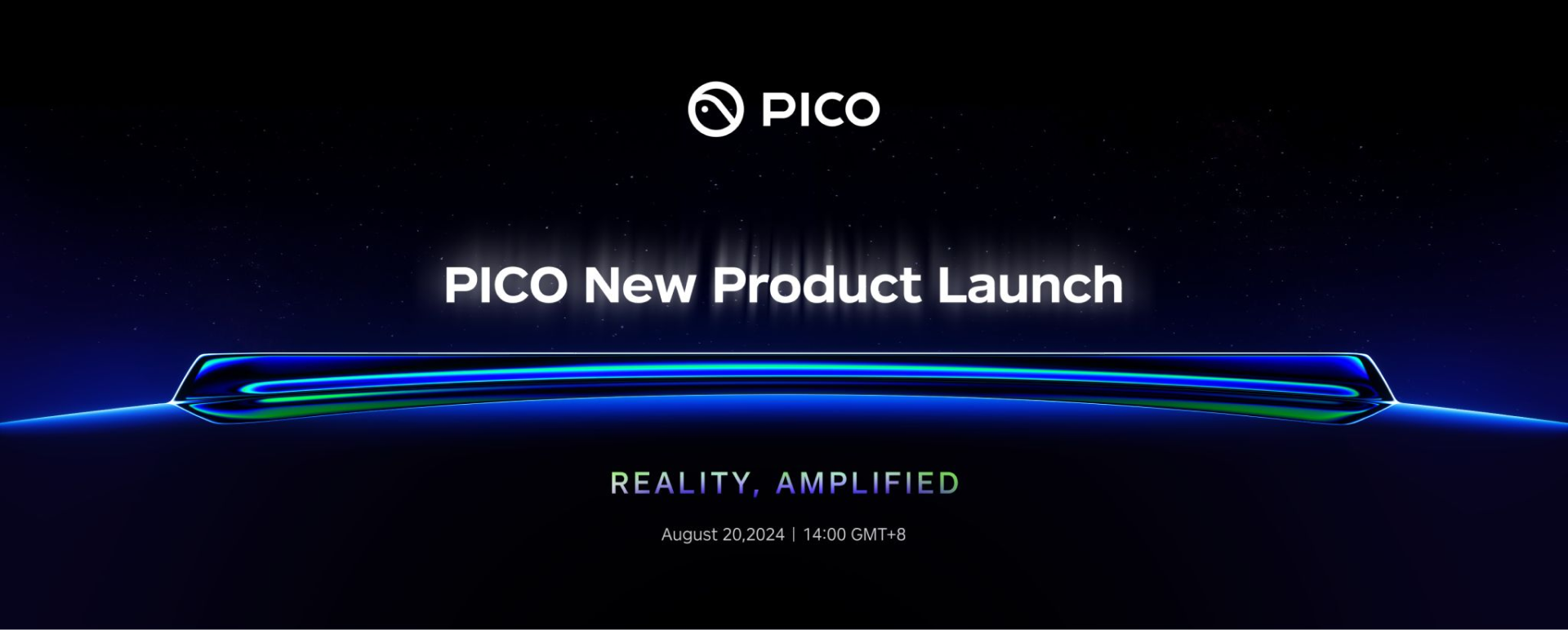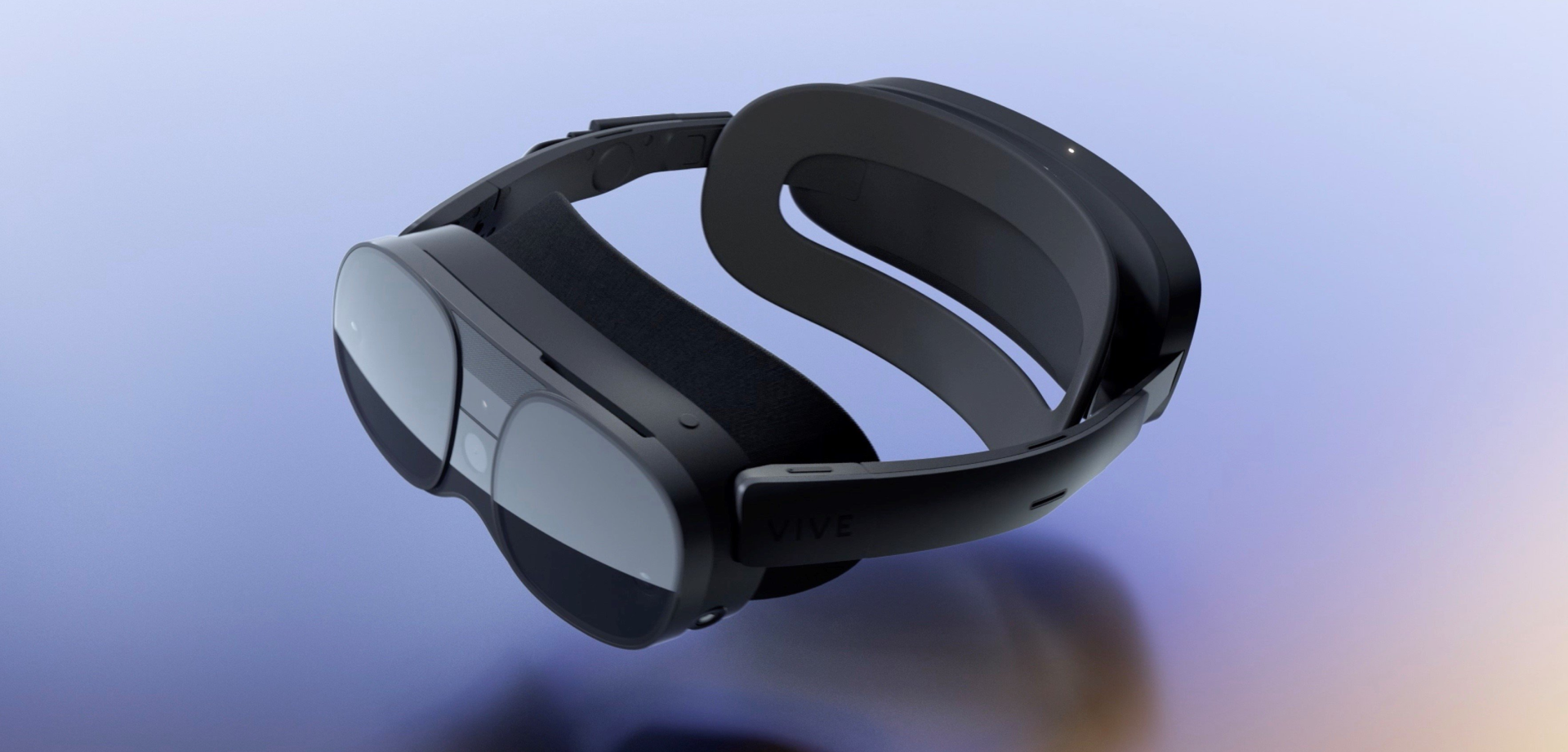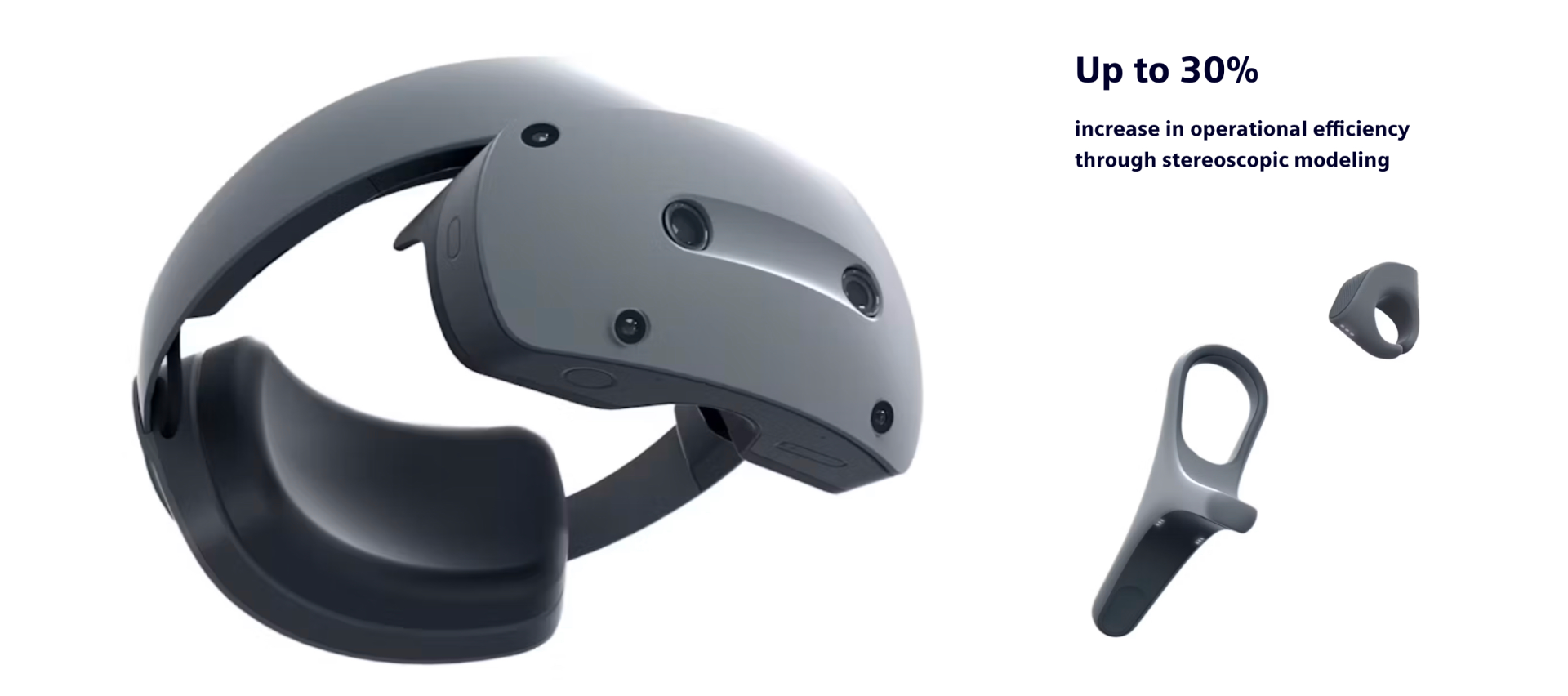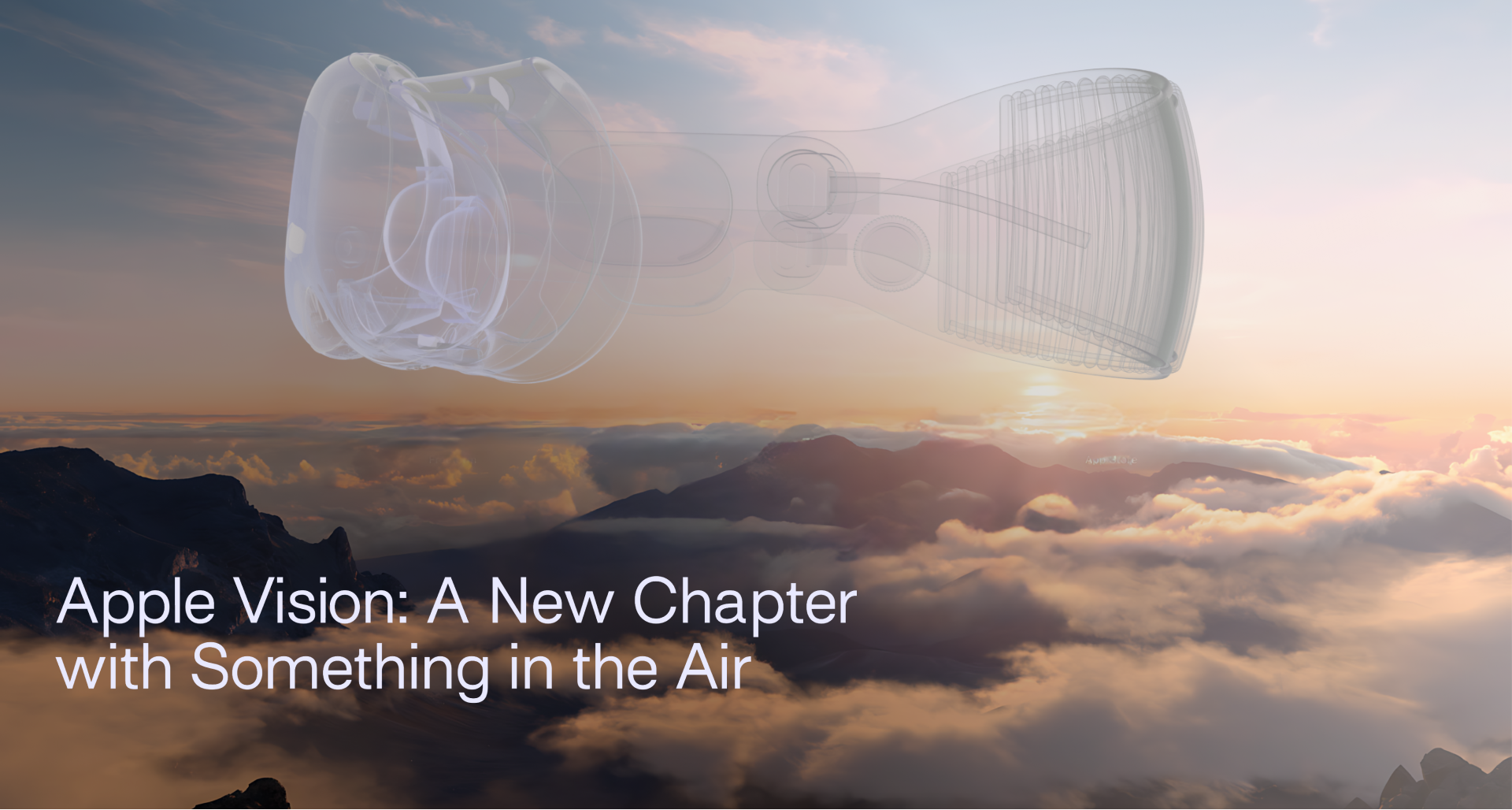Fantastic Four: Best Upcoming XR Headsets in 2024
Table of Contents
What is Extended Reality (XR)?
XR is the general term used to describe the technology of human-machine interaction facilitated through immersive hardware, software, and digitalized cross-physical and virtual world interactions. It is often referred to as an umbrella term that unites the three immersive technologies: Augmented Reality (AR), Virtual Reality (VR), and Mixed Reality (MR). Where Augmented Reality is used to enhance natural world objects in real-time with digital capabilities, Virtual Reality is an artificially created interactive virtual simulation that can be developed to recreate real world objects, processes, interactions, and environments. Last is Mixed Reality, which makes it possible to interact and control the digital overlays of real-world objects and environments in real time. All three technologies are possible through headworn and faceworn AR, VR, and MR hardware devices that include glasses and headsets.
What are XR headsets?
As Extended Reality (XR) encompasses a wide range of immersive technologies, the devices designed for these experiences come with diverse specifications and capabilities. These include key factors such as visual fidelity, field of view (FoV), refresh rates, eye-tracking capabilities, battery life, ergonomic design, etc. XR hardware typically involves head-worn devices, which can either be standalone units or tethered to an external system, enabling users to engage with digital content and seamlessly interact with augmented, virtual, and mixed-reality environments.
Read also: Experiential XR Design – Driving User Efficiency and Engagement
In recent years, we have witnessed the release of several groundbreaking headsets, each pushing the boundaries of what is possible with immersive technology. As we look to the future, the Autumn and Winter of 2024 are shaping up to be particularly exciting for the XR industry, with numerous cutting-edge headset launches on the horizon.
These new devices are expected to set new standards in user comfort, performance, and extended usage time, made possible by the integration of Artificial Intelligence (AI) and advanced chipsets. Companies such as PICO, HTC, Sony, and Meta are poised to introduce their latest innovations, which promise to make a significant impact on the industry and push XR technology into new realms of possibility. With a strong focus on refining the user experience, these headsets are anticipated to bridge the gap between high performance and everyday usability, making XR more accessible to a broader audience.
As we eagerly anticipate these launches, the big questions are: What features will these next-generation devices bring to the table, and how will they shape the future of XR? These new releases have the potential to revolutionize not only entertainment and gaming but also professional training, remote work, and various other industries, such complex as healthcare, bringing the XR experience ever closer to mainstream adoption.
Where are XR headsets used?
Diverse XR headsets are being utilized across various industries to transform how people work, learn, and interact. Here’s a look at some of the major sectors where XR technology is making a significant impact.
Healthcare & Life Sciences. In healthcare, XR headsets are revolutionizing medical training and upskilling, surgery, and patient care. Virtual reality (VR) is used for medical simulations, allowing healthcare professionals to practice complex procedures in a risk-free environment. XR devices may assist in surgeries by overlaying 3D models onto the patient’s anatomy, guiding surgeons in real-time. Additionally, these tools help enhance medical education, providing students with highly realistic models to study human anatomy. XR is also being used in therapy and rehabilitation, offering new ways to treat conditions like PTSD and anxiety.
See also: Medtronic McGRATH™ MAC VR Intubation Simulation
Aerospace and Defence. Aerospace and defense have been early adopters of XR technology, utilizing it for simulation, training, and operations. VR headsets create realistic flight simulations for pilot training, while MR devices provide real-time data overlays on the battlefield, enhancing situational awareness. XR is also being used for tactical training and mission planning, allowing soldiers to practice strategies in virtual environments that replicate combat scenarios.
Education and Training. XR is transforming education and training by providing immersive learning experiences. XR headsets are being used in classrooms to take students on virtual field trips and make abstract concepts more tangible. In corporate training, XR allows employees to practice tasks in simulated environments, reducing the risks and costs associated with traditional training methods; technology is also being used in vocational education to guide trainees through technical tasks with digital overlays.
See also: American Red Cross Lifeguard VR Training
Public Sector. The public sector leverages XR to improve public safety, urban planning, and disaster management. Emergency responders use VR simulations to train for crises, while urban planners utilize AR and MR to visualize city layouts and infrastructure projects. In disaster management, XR helps authorities plan evacuations and coordinate relief efforts more effectively.
See also: Roche Ophthalmology Macular Disease XR Simulation
Entertainment and Commercial. The entertainment industry has embraced XR for live events, film, and marketing. AR is enhancing live events with real-time digital content, while in the commercial sector, XR headsets are being used for virtual shopping experiences, enabling customers to try products before purchasing.
Top XR headsets to be launched in Q3-Q4 2024
PICO
PICO just announced a new product in less than two weeks that promises to elevate users’ MR/VR experience to the next level. Experts already claim that a new device can lead to a significant leap in MR capabilities from PICO, although there are not many official details currently available.

Image source: Pico
According to Dexerto, the new headset development project under the codename ‘Project Swan’ is focused on a smaller and lighter device, Pico 4S, which will reportedly have a chipset similar to the one used in the Meta Quest 3 – an upgraded version of the Snapdragon XR2 Gen 2 or the same Snapdragon chip paired with more RAM. After that PICO provided us with more details. The new device will be named Pico 4 Ultra, and, as the Industry claims, it was designed for all-day comfort with MR Color See-Through for immersive mixed reality features and Spatial Video function for an extraordinary visual experience.
HTC Vive
The new HTC Vive product will also be released in 2024. It will empower astronauts to conquer the challenges of outer space, enable scientists to discover solutions for controlling and curing diseases, introduce more creative tools, and harness AI-powered features for enhanced learning in XR.

Image source: HTC Vive
Qualcomm announced earlier that HTC is among five companies set to use the new Snapdragon XR2+ Gen 2 chipset, an enhanced version of the XR2 Gen 2.
Sony
Sony’s upcoming launch is an XR head-mounted display for NX Immersive Designer (NX is an open-source build system that provides tools and techniques for enhancing developer productivity). Claiming that the next generation of product engineering is immersive, Sony plans to introduce a virtual headset that pairs seamlessly with immersive CAD (computer-aided) software to bridge the gap between the real and digital worlds, delivering the most precise and natural way to experience, interact and collaborate in 3D.

Image source: Sony
Due to the unique design of the controllers, a ring, and a handle, stunning visual fidelity, matched with dynamic software and hardware integration, promises to increase operational efficiency by up to 30%. It will benefit immersive engineering and collaborative product design, such as aircraft construction and many more.
Meta
Meta Quest 3 can be considered among the most discussed headsets in 2024. However, according to Mark Zuckerberg, Meta plans to launch a “lightweight headset that pairs with your computer on your desk to provide the best work experience with you at home or anywhere else you go or you can imagine.” Alongside convenience and enhanced user performance, it will also become a notable part of Meta’s ecosystem, where the company emphasizes its efforts while engaging notable hardware developers as partners.
The rest of 2024 is set to be an exciting time for the XR industry, with several highly anticipated headsets making their debut. These new devices from PICO, HTC, Sony, and Meta promise to elevate user experiences with enhanced comfort, extended usage times, and the integration of AI and advanced chipsets. PICO’s upcoming product, expected in less than two weeks, is already generating talk about its potential leap in MR capabilities. With its cutting-edge features, HTC’s Vive, equipped with the new Snapdragon XR2+ Gen 2 chipset, aims to support astronauts, scientists, and creatives. Sony’s innovative head-mounted display for NX Immersive Designer will bridge the gap between real and digital worlds, enhancing productivity, product design, and collaboration in 3D. Finally, Meta promises to offer a seamless and versatile work experience, further integrating into Meta’s expansive ecosystem.
What is the most envisioned XR headset?
Among the most envisioned headsets that may be launched shortly is a new spatial device by Apple Vision. However, it may occur in the beginning of 2025. Apple is set to disrupt the XR market once again with the anticipated launch of the Apple Vision Air. This new, more affordable spatial device is poised to make mixed reality accessible to a broader audience, blending competitive pricing with cutting-edge features and the seamless integration Apple is known for.

By analyzing Apple’s recent strategies and tactics, it becomes clear that the company is strategically shifting its focus to attract a broader audience with the Apple Vision Air. This more affordable device, priced under $1,499 and possibly even below $1,000, is expected to significantly expand the XR market, creating new habits of using the headset for work, education, and leisure.
The launch of the Apple Vision Air is expected to ignite intense competition and innovation in the XR market. This new device will stimulate development and elevate competition, driving technology adoption and expanding the mainstream consumer segment. It will also encourage market participants, such as enterprises, to accelerate their XR strategies and implementations.
Another significant outcome that is usually expected from Apple is the investment in expanding the ecosystem. Apple can offer a more cost-effective device while ensuring total compatibility with other Apple products and adding more businesses and consumers into the ecosystem.
Imagine the potential of wirelessly connecting this headset to non-Apple devices, like Microsoft Windows PCs, that can open up the XR market to segments currently underserved by Apple’s ecosystem, broadening the reach and impact of spatial technology.
The more affordable price is expected to appeal to enterprises seeking to adopt XR solutions for present and new audiences. Additionally, Apple’s declared emphasis on sustainability—incorporating recycled materials and pioneering renewable alternatives—could help reduce costs while aligning with the company’s 2030 environmental goals, making it an attractive option for users and partners prioritizing sustainability.
By making spatial technology more accessible, smarter, and eco-friendly, Apple will set a new standard in XR and push the boundaries of what’s possible in Healthcare, Education, and beyond, adding to the high speed of the XR industry, changing our world.
Summary
At Lucid Reality Labs, we believe that the rapid advancements in XR technology will serve as a powerful catalyst not just to connect real and digital words but also to assist enterprise businesses in adopting innovative strategies, incorporating XR capabilities to unlock new opportunities and drive transformative change. As Extended reality (XR) headsets evolve in terms of comfort, performance, and usability, we anticipate that businesses across industries will increasingly recognize the value of immersive technologies in enhancing their operations, training, and customer engagement.
By staying at the forefront of XR innovation, we at Lucid Reality Labs are committed to helping enterprises navigate this transformative landscape, enabling our partners to harness the full potential of XR technology to achieve their goals and drive game-changing innovation forward across multiple sectors.
About Lucid Reality Labs
Lucid Reality Labs is a visionary XR development company that crafts complex immersive solutions through spatial technology – from concept & design to development & support, with a strategic focus on Healthcare, Life Science, Aerospace & Defense, and many more. We equip industries with the boundless potential of immersive technology. The Lucid Reality Labs’ Team believes that XR technologies can contribute to the improvement of the quality of life for people around the globe. With our mission of disrupting global challenges with responsible technology, the company delivers solutions with impact that elevate industries with immersive capabilities. Check the award-winning use cases created by Lucid Reality Labs here.
Authors: Lucid Reality Labs marketing team & subject matter experts.
FAQ
What’s the best headset to use for 2023-2024?
It would be reasonably inaccurate to recommend one particular headset, primarily since each of the described XR headsets has its advantages and purposes. The best XR headset to use would be the one that serves the project purpose or individual need, making the educated choice based on factors like visual fidelity, weight, battery life, and, most definitely, the required level of interactivity and immersion.
Where do you start if you’re looking to use mixed reality to enhance productivity and collaboration?
Depending on your knowledge and familiarity with MR technology, you can start your research by checking examples of technological capabilities and previously developed projects. This could give you a better visual idea of MR capabilities and help shape your vision of the productivity and collaboration functions you wish to be enhanced by immersive technology.
Are there other AR glasses and headsets to consider?
Every year, the AR hardware market sees more new devices launched, and 2023 will be no exception. Our article covered some fine examples of XR technology, which made headlines and buzz in the immersive technology industry. However, quite a few more were launched in 2022, like Vuzix Blade 2, INMO Air, Nreal Air, MAD Gaze Wave, Dream Glass Lead Pro, and Cosmo Vision will be launched in 2023.
